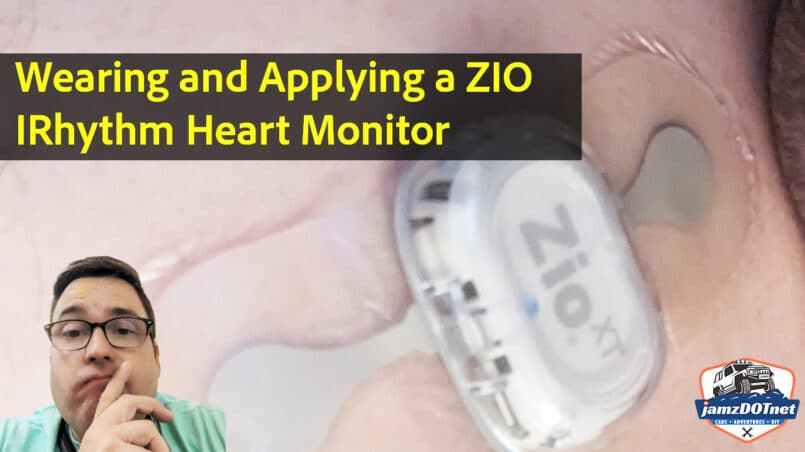Follow along as I show applying and wearing the zio irhythm heart monitor! Luckily for me, I have no major medical issues and this is truly a preventive measure to ensure some data my FitBit is showing is nothing for concern. But, it’s critical to ensure that is the case, thus, why my doctor is having me go down this path. If you are prescribed this, don’t worry, it’s easy! Let me show you and I’ll discuss my experience.
Medical-grade heart monitors are advanced devices used in clinical settings to monitor and analyze a patient’s heart activity with a high level of accuracy and precision. These monitors are typically more sophisticated than consumer-grade wearable heart monitors and are designed to meet specific medical standards and regulations.
Here are some key characteristics and features of medical-grade heart monitors:
ECG/EKG Monitoring: Medical-grade heart monitors primarily use electrocardiography (ECG or EKG) technology to measure and record the electrical activity of the heart. This provides detailed information about the heart’s rhythm, rate, and any abnormalities that may be present.
Diagnostic Capabilities: These monitors are capable of providing diagnostic information about the patient’s heart health. They can detect various cardiac conditions, such as arrhythmias (irregular heart rhythms), heart attacks, atrial fibrillation, and other abnormalities.
Accuracy and Precision: Medical-grade heart monitors are designed to provide highly accurate and reliable data. They have advanced sensors and algorithms that minimize noise interference and ensure precise measurements of the heart’s electrical signals.
Holter Monitoring: Some medical-grade heart monitors are portable devices called Holter monitors. These are typically worn by patients for an extended period, usually 24 to 48 hours or even longer, to continuously record the heart’s electrical activity during daily activities. This long-term monitoring helps in capturing any intermittent or infrequent heart abnormalities that may not be detected during a short-term examination.
Event Monitoring: Event monitors are another type of medical-grade heart monitor used for specific situations. These devices are typically worn for a longer duration, ranging from days to weeks or even months. They are triggered manually by the patient or automatically by the device when they experience symptoms such as chest pain or palpitations. Event monitors are useful for capturing cardiac events that occur infrequently.
Data Analysis and Interpretation: Medical-grade heart monitors are often accompanied by specialized software that allows healthcare professionals to analyze the collected data. These software platforms provide comprehensive reports, visualizations, and tools for interpretation, aiding in the diagnosis and treatment of cardiac conditions.
Integration with Healthcare Systems: Medical-grade heart monitors can often be integrated with electronic health record (EHR) systems and other healthcare technologies. This enables seamless sharing of patient data, allows physicians to review and access the information remotely, and facilitates communication between healthcare providers.
Medical-grade heart monitors are typically used in hospitals, clinics, and other medical settings where trained healthcare professionals can interpret the data and make informed decisions regarding patient care. They play a crucial role in diagnosing and monitoring cardiac conditions, guiding treatment plans, and evaluating the effectiveness of interventions.



